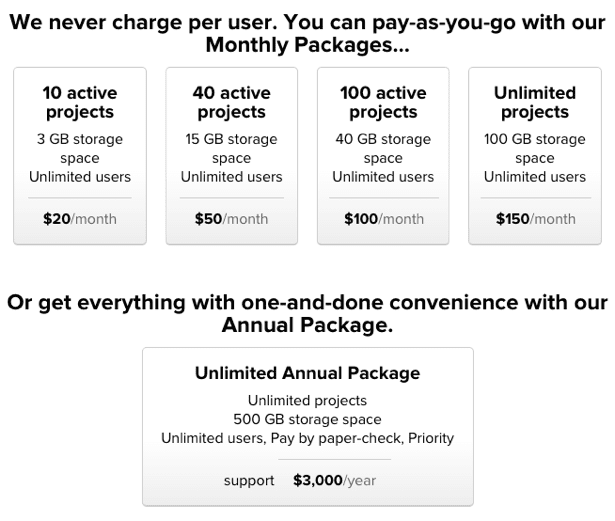After months of development, you have a great new WordPress theme or plugin ready for sale. You’re confident your product will help users and be worth every penny of its price. But what should that price actually be?
Let’s consider another scenario. Maybe your product has been live for some time but sales are slow. You suspect price is the problem. How do you troubleshoot?
Getting your pricing right is one of the most important factors in generating consistent sales over the long term and it can be a tricky one to dial in for individual products.
In this article we’ll go over eight simple but effective tips you can use to steer things in the right direction and start getting customers through the door at a price that makes it worth your while.
Let’s get going!
1. Do Your Research
The first step is always research. You probably did plenty of product research while developing your offering, finding the right price should be no different. The key to this is establishing what the current market climate for your offering is and getting familiar with people’s expectations.
Start by looking up the top premium plugins or themes that offer similar features to your own and visiting other developers’ pages to see what they’re charging. Getting to grips with the current price trends for products like yours will give you an idea of what customers are actually willing to pay for. You might be pleasantly surprised at what you discover.
This will also help you assess the price versus features question. What do the top plugins offer at a particular price point? Does your product provide the same level of functionality, or more? Pick a price that strikes the right balance between affordability and value to the end user.
2. Ask Around
In addition to your market research, go a step further and actually talk with other developers. You shouldn’t be afraid of asking people in your field about their approach to pricing products.
What you’ll find is that many WordPress developers are happy to share their knowledge with colleagues (providing you don’t position yourself as a competitor) and you’ll often be able to glean valuable insight into why they price products the way they do.
For example, perhaps they have a large client list and can offer a lower price as a result. Or maybe they have a team of developers working for them and thus need to sell their products at a higher price to support their staff. The more information you can unearth, the more perspective you’ll have when it comes to pricing your own plugin or theme.
Another tactic is to quiz potential customers in advance. Many of your friends and colleagues could potentially be your first paying customers. Talk with people you know who’ve already purchased themes or plugins in the past. Ask them what they previously paid or what they’d be willing to pay in the future for similar products. You’ll get a variety of opinions but it will all help give you a realistic feel for the spending expectations of real WordPress users.
3. Be Realistic
You know better than anyone else the time and care that went into developing your product. The hours you and your team spent developing your plugin or theme should translate into how you price them.
You need to stay realistic about the price point however. Don’t charge an inflated price just because you think you can get away with it. People are only willing to pay so much for software or a service.
At the same time, you need to make sure you are garnering a profit from your work. Only you will know the internal demands of your business. Whether you are supporting yourself or a staff of employees, you have to make sure your products are generating enough income to keep the show on the road.
Carefully consider your needs as a developer or company and set a price that will help you calmly grow over time rather than have you constantly nervously checking your bank account.
4. Don’t Compete on Price
It’s very tempting, especially when you’re starting out with a new product, to undercut what’s currently out there in the market. This is very often a mistake however.
The simple assumption is customers will go for the plugin or theme that’s the cheapest but there are several reasons why this tactic is damaging in the long run – for both you and the market.
Initial heavily discounted products might get you a few early sales – there are always those customers who go for a low price above everything else after all – but when you sell your product at a price below its worth you devalue it. It creates the perception that all your hard work and effort aren’t worth all that much to either you or your customer. You’ll end up earning far less than you deserve and many of the customers you’ll attract with this tactic will be toxic ones.
Undercutting typically damages sales over the long run. Most WordPress users – at least the ones you should be seeking to target – are seeking quality solutions at a fair price. These customers will be looking at reviews and the usability of a product as well as price. They’re willing to pay for value.
A plugin or theme at a suspiciously low price can actually turn customers away as many will associate it with poor quality. Think about all the cheap cellphone covers you can buy on Amazon that break in a week for example. You don’t want to be lumped into that bracket. You can also start your price high, and then lower it over time to find the sweet spot. That’s called price skimming.
5. Think like the Customer
Be sure to put yourself in your potential customers’ shoes. Building and running a WordPress site brings a lot of considerations with it. The typical site owner is trying to fight his way through a vast array of decisions about domains, hosting, content creation and a variety of other things related to his website. Try and figure out where your product slots into that overall mix.
It comes down to how much work you’re taking off your customers’ hands. If your product is a functional but basic plugin, consider setting a lower price. Customers will be looking at it in the context of other more pressing purchases that they somehow need to fund. A lower price point will be a natural fit here.
If you’re offering a theme or tool that provides a suite of features on the other hand, a premium price is the way to go. You’re providing solutions that will save customers both time and money on their WordPress sites. Purchasing your product will mean less hours spent problem solving or searching for help. That fully deserves a higher price point and, pitched correctly, people will be happy to pay it.
6. Offer Pricing Tiers
Visit any hosting site or design company and you will see this tactic in action. A huge amount of companies break up their products and services into tiers for good reason. It gives the customer options for both what they need and what they’re willing to pay for. It also encourages new customers on board and gives them a natural upgrade path that may well turn into a lucrative long-term relationship over time.
Not every theme or plugin lends itself to tiered pricing but definitely assess your own offering to see if this could be a suitable option.
If you have a theme for example, consider offering packages for different users. Personal blog themes make sensible, affordable products to aim at individuals. A business-based theme with more complex features, on the other hand, can be offered at a higher price to firms.
Premium features for plugins – extended support or security tools for example – are another natural way of introducing tiered options. You might even bundle several products together to offer an advanced suite of services at the higher end of the tier.
7. Consider Subscription Offers
An ongoing goal for any business is to build a relationship with its customers. Even a smaller product like a starter theme or plugin can be a perfect stepping stone to a long-term partnership. For the right type of services, a small subscription fee can build a loyal client base and give you reliable recurring revenue.
This is an especially good option for premium themes where a subscription model allows you to provide continual updates and improvements to your customers. Instead of buying a one-time, static product, your customers will feel like they’re investing in a support system for their website. You will move from being a theme salesmen to a WordPress experience expert and profit accordingly.
Customers who subscribe to your products will also naturally be interested in any new products you release. They may even spread the word to their friends and colleagues. The key is to set a reasonable fee, per month or year, that makes sense in terms of your bottom line and continues delivering value to your customers.
8. Be Prepared to Make Adjustments
No matter what price you set for your plugin or theme today, be willing to change it in the future. You should be prepared to raise or lower your price in response to circumstances as they arise. Adapting to the ebb and flow of the market in an appropriate way will help you attract more sales and loyal customers over time.
As new products are released, they can change customer perception about your overall offerings. That hot new plugin you’ve just released may make your old product range look obsolete (even if it isn’t). Sensible price adjustments can help balance customer expectations and maintain new sales.
This is also a good tactic for when you have new products on the horizon. To generate interest in your products, a temporary sale will often drive traffic to your company website. You might even consider raising the price of a current product, if you’ve released new features or add-ons that warrant a change.
Conclusion
As we’ve hopefully shown, there are many things to keep in mind when pricing your themes or plugins and pricing is as much an art as a science. It’s a part of your business that requires constant scrutiny but the potential payoff for that time investment is enormous.
Let’s recap the points we covered:
- Do your research.
- Ask around.
- Be realistic.
- Don’t compete on price.
- Think like the customer.
- Offer pricing tiers.
- Consider subscription offers.
- Be prepared to make adjustments.
Have you struggled with pricing when it comes to driving sales for your WordPress products? Or stumbled upon pricing tactics we’ve missed that might help others? Get in touch via the comments and let us know.
Article thumbnail image by pulsar011 / shutterstock.com.










I think WordPress community should think about this pricing issue much more. The pricing level in general are much lower than they’re supposed to be. Maybe it helps preventing smaller players to enter into the market but it just doesn’t make sense to me creating something with 100s of hours of work and then selling it for $20-25.
Hi Tom,
It’s really great and useful piece of info. I am glad that you simply shared this helpful information with us.
Thanks for sharing this awesome article.
Excelente Artículo, muchas gracias Tom.
salu2
Thanks Tom, I am currently massaging my prices. These are great guidelines.
Hi Tom Ewer
Well written article about to promote premium WordPress theme and plugin. Might this article will helps other webmaster who ready to competitive elegant themes as well.